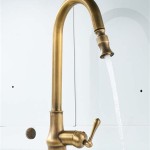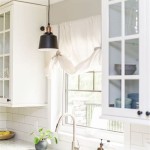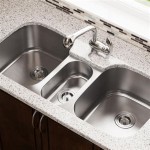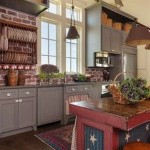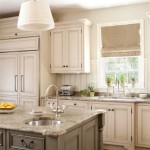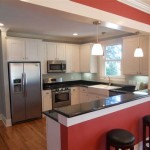Essential Aspects of Kitchen Lighting Design: Photos and Ideas
Introduction: The kitchen, as the heart of the home, demands meticulous lighting design to ensure both functionality and ambiance. Whether you're embarking on a complete remodel or simply seeking upgrades, consider these essential aspects to elevate your kitchen lighting experience.
1. Task Lighting:
Task lighting illuminates specific workspaces, such as the countertop, stovetop, and sink. It enhances visibility and reduces eye strain during tasks like cooking, cleaning, and meal preparation. Under-cabinet lights, pendants, and recessed fixtures are effective options for task lighting.
2. Ambient Lighting:
Ambient lighting provides general illumination throughout the kitchen, creating a welcoming ambiance. Consider ceiling fixtures, such as chandeliers, recessed lights, or track lighting, to distribute light evenly. Dimmable fixtures allow you to adjust the brightness depending on the occasion.
3. Accent Lighting:
Accent lighting highlights specific features or areas of the kitchen, such as artwork, open shelves, or a breakfast nook. Track lighting, wall sconces, or picture lights can create focal points and add visual interest. Accent lighting enhances the overall design and ambiance.
4. Layering:
Layering involves combining different types of lighting to create a balanced and dynamic lighting scheme. By combining task, ambient, and accent lighting, you can achieve a space that is both functional and visually appealing. Layering allows you to customize the lighting to suit different activities and moods.
5. Natural Light:
Maximize natural light by utilizing large windows or skylights. Natural light creates a bright and inviting atmosphere while reducing the need for artificial lighting during the day. Consider installing blinds or curtains to control the amount of natural light entering the space.
6. Energy Efficiency:
LED bulbs are highly energy-efficient and long-lasting, making them an excellent choice for kitchen lighting. They consume less energy than traditional bulbs and can significantly reduce your electricity bills. Additionally, consider energy-saving features such as dimmers and motion sensors to further enhance efficiency.
7. Style and Aesthetics:
The lighting fixtures you choose should complement the overall design and style of your kitchen. Modern kitchens may opt for sleek and contemporary lighting, while traditional kitchens may prefer fixtures with intricate details. Consider the shape, finish, and size of the fixtures to ensure they harmoniously blend with the kitchen's decor.
Photos for Inspiration:
Browse through a gallery of captivating kitchen lighting designs to spark inspiration. Explore various layouts, fixture styles, and combinations to visualize the possibilities for your own kitchen.
Conclusion:
By considering these essential aspects of kitchen lighting design, you can create a space that is both functional and aesthetically pleasing. With the right combination of task, ambient, accent, natural, and energy-efficient lighting, you can transform your kitchen into the warm and inviting heart of your home.

9 Stunning Kitchen Island Lighting Ideas Design Cafe

A Complete Guide To Modern Kitchen Lighting Design In

18 Best Kitchen Lighting Ideas Led Cabinet Hanging Lights More

A Complete Guide To Modern Kitchen Lighting Design In

Interior Design Basics Kitchen Lighting Tips Dkor Interiors

10 Kitchen Lighting Design Ideas To Illuminate Your Cooking Space

10 Creative Kitchen Lighting Ideas 2024 Led Manufacturer In Taiwan Tj2

Kitchen Lights Design Bright Ideas For Illuminate Your Space In Style

Kitchen Ceiling Lighting Ideas For Your Home Designcafe

10 Kitchen Lighting Design Ideas To Illuminate Your Cooking Space
Related Posts

